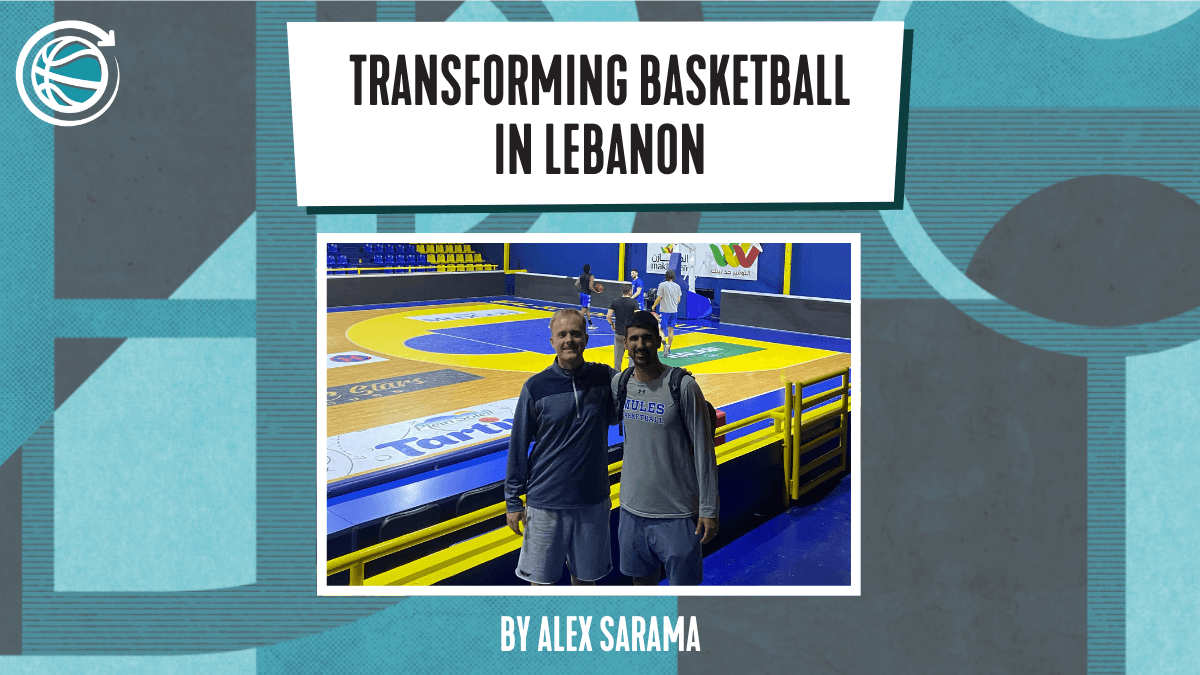How Effective is the NBA Combine in Evaluating Talent?


How is it possible that current NBA combine testing methods may bias, rather than effectively inform, front office decision-makers? The combine is traditionally used to measure and quantity “athleticism”. Athleticism in itself is a subjective term. Within an ecological approach, the term “action capabilities” may be more useful. Action capabilities are not skills, but rather attributes which shape how a player moves and the skills they are capable of. These include abilities such as vertical jump, power, acceleration, lateral quickness, etc. In simple terms, action capabilities influence the potential movements a player is capable of.
It is essential to outline how action capabilities alone do not equate to skilful behaviours. Over several years, pre-draft tests have been used to measure the action capabilities of NBA draft prospects. The first issue however is the inherent flaw behind the testing methods used. This applies to all the core combine tests, including the vertical and run-up jumps, lane “agility”, shuffle runs and the 3/4 sprint.
Ecological dynamics is a framework which explains the behaviours of neurobiological systems (including humans), specifically related to the processes of action, perception and cognition. This can be used as powerful framework for understanding performance in basketball and has important implications for the Combine in its current form.
A key part of successful performance, and something critical for front offices to evaluate, is the ability of players to act on attractive affordances. Affordances are best-viewed as opportunities for action. Transforming Basketball lays the case for understanding affordances as being a key factor in player evaluation, as the perception of affordances is what may allow for front offices to evaluate skilful behaviour and identify under the radar prospects.
Let’s quickly revisit the term ‘affordance’ and place the term in the context of a basketball specific possession. In a pick and roll, a ball handler may encounter an affordance landscape consisting of opportunities to reject, shoot the pull-up, perform a pocket pass, skip pass etc. The affordance landscape is constantly changing over rapid timescales given the fast-paced and unpredictable nature of basketball.
It is the ability of players to act on the most attractive affordances in a functional manner, that constitutes whether or not they may be deemed as a skilful player. Perception-action coupling accounts for how players perceive affordances and self-organise into movement solutions.
Action capabilities come back into the equation as these affect the affordances players can act or not act upon. A greater vertical may lead to more opportunities to finish above the rim, but it does not guarantee it! This is because this can only be realised if players are attuned to their affordance landscape. Therefore, there is a huge flaw in assuming that impressive action capabilities alone equate to a better NBA prospect. This misassumption is what has led to many skilled players going under the radar in previous drafts, and why the NBA Combine tests continue to be used in their current format.
In practical terms, 6ft 11 player who records an impressive vertical jump score could mean nothing if the player cannot accurately perceive their affordance landscape! A player could have a much lower vertical test score, but be far more attuned to finding ways to exploit space above and around the rim. This is the problem with current NBA combine protocols: more effective performers may effectively fly under the radar and be ‘hidden’ within the reductionist data sets. The numbers derived from these tests fail to account for how successful performance in basketball is predicated upon the relationship between the player and their environment.
As Karamvir Gill has said: ”You could have the fastest player in the world, but if they are not attuned to the opportunities to get behind the defense and accelerate in transition, then it accounts for nothing.” This highlights why the 3/4 sprint test is completely redundant. Gill uses an ecological approach working as the athletic performance coach for RJ Barrett.
In the past, NBA players themselves have been vocal in expressing their disdain for combine testing measures…
“All the strength coaches were laughing at me and s—. They were giggling with each other that I couldn’t lift 185 pounds and I was like, ‘All right, keep laughing…’ It was a funny thing because I was the only one that couldn’t lift it and I was struggling to lift it. I was embarrassed at that point, but I’m like, ‘Give me a basketball, please. Give me a ball.” – Kevin Durant
Such sentiments were also echoed by @kylekuzma:
I remember when I thought these drills were life or death 😭😭😭 shiii don’t matter at all lol https://t.co/6nYOq4lQ98
— kuz (@kylekuzma) May 16, 2023
Let’s unpack this further. Weight room strength, as KD and Kuzma both alluded to, has extremely little correlation on the ability to finish well through contact. This is because benching a heavy weight and finishing adaptively at a high speed through two defenders are completely different tasks. In video content released from the 2022 draft combine, athletic personnel spoke about the methodology and intentions behind each test. Beginning with the run-up vertical jump, the test was framed as “placing players in an environment for what they do in the actual game.”
The reality is that this test is completely lacking in representativeness. Impressive vertical scores do not equate to basketball skills such as a greater rebounding proficiency. There is no specifying information (teammates and opponents) or basketball task within the test to provide meaningful takeaways. NBA teams could access a competitive advantage by instead compiling data from more representative practice tasks. This would better reflect the skilful behaviours and intentions of each draft prospect.
On a similar note, many correlate results from the standing vertical jump test with players being able to jump high in games. However this test presents a very different problem than what players commonly face in the game when jumping vertically. Within the game, players may jump in order to pursue a rebound, to dunk, help from the weak side, etc. All these movements share a key factor in common that is not associated or measured with the vertical jump test: time pressure.
In the vertical jump test, there is all the time in the world to jump as high as possible but when it comes to the game, all the time in the world turns into fractions of a second in which to operate. This leads to the body using very different self-organisational strategies in order to move. In the vertical jump, players use large counter movements when at a standstill to tense and taunt their muscles, reducing muscle slack into an active state that allows them to jump. In the game completely different strategies are used, such as co-contractions, to reduce muscle slack and jump.
Frans Bosch refers to muscle slack to describe how quickly a muscle can go from slack to tense. Bosch uses the analogy of the time it takes for a loose rope pulling a car to become taught. Given the dynamic nature of basketball, there is little time to produce large countermovements. If athletes rarely or if ever operate without time pressure when jumping, how valuable is the information being gathered from the vertical jump test? In games, players have to generate as much force as possible in the shortest time, requiring the need to reduce muscle slack. As such, this is a huge part of jumping in basketball, but ignored through traditional testing protocols such as the vertical jump when players begin in a pre-tensed position grounded to the floor. This is one just example of how skill acquisition knowledge could fundamentally alter the approach used to identify prospects within a draft. This would be most useful if teams could generate their own unique testing methods when working with players in a pre-draft scenario.
The lane agility test is another test that offers little to no value. This is often referred to as being an activity which transfers to the game because it indicates the ability of prospective NBA draft picks to change directions in multiple planes. But why do players change direction and sprint in the first instance? Real agility requires authentic affordances and opponents. “Agility” within a closed drill such as lane slides is simply not agility.
The last test – the lane shuffle – is often used to test “agility” and “reaction skills.” Within this test, players react to flashing lights to change direction, supposedly offering a glimpse into the level of their “cognitive skills”. However, skill acquisition research forms us that lights offer no ability to do this because there is is zero correlation between reacting to a light and successful basketball performance. Players don’t couple their actions to arbitrary lights, but rather to information gathered from their opponents and teammates. This is what affords them the ability to perceive and act upon opportunities for action (affordances). This is why many companies offering NBA teams support in evaluating prospects through “cognitive testing” schemes utilising “neuroscience” amount to nothing more than pure pseudoscience. Information from such programs may actually be biasing evaluations by offering incorrect information.
It can therefore be said that current combine testing methods fail to represent the complexity of the game. The reductionist data sets could negatively impact the decisions made by front offices by serving as distracting influences. Path dependence refers to how procedures that are so normal in the present day – such as combine tests and traditional coaching methods – continue to be adopted and used as the primary methodology despite other evidence suggesting a more effective alternative. When previous methods and working methodologies become entrenched, rather than adopting a new approach, individuals may progress further down the same path. This is highly applicable to the combine in its current format.
The integration of evidence-based approaches can stem this tide. Applying the theoretical frameworks of the CLA and ecological dynamics can impact every part of a basketball organisation (and an overall league as in this instance!). The combine and other athletic performance approaches employed in basketball only serve to deepen the prevalence of organisational silos. Integrating evidence-based ideas can help organisations move away from this by embracing the alternative and incorporating a unified organisational approach.
Learn more about alternatives to traditional strength and conditioning methods in basketball.
























